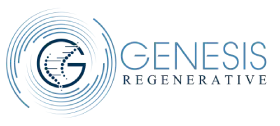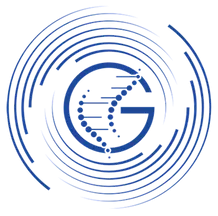Find A Genesis Clinician
Meet Your Genesis Clinician Video
Can Travel To Treat Patients
Can Accommodate Travel Patients
Please Click Links Below to Learn About Our Medical Directors
| STATE | CITY | CLINICIAN NAME | WEBSITE & SERVICES |
|---|---|---|---|
| Arizona | Prescott | Dr. Daniel Lorenzo | |
| California | Camarillo | Dr. Farid Kia | |
| California | Carmel | Dr. Michele Kraft | |
| California | Downey, Garden Grove, Indio, Placentia | Dr. Albert Lai | |
| California | Los Angeles | Dr. Herman Bell | |
| California | Los Angeles | Dr. Har Hari Khalsa | |
| California | Los Angeles | Dr. Padra Nourparvar | |
| California | Rancho Mirage | Dr. Eugene Rajaratnam | |
| California | Torrance | Dr. Fouad Ghaly | Learn More  |
| California | Valencia | Dr. Jacqueline Sammons | |
| California | Westlake Village | Dr. Vishal Thakral | |
| District of Columbia, Maryland | Washington, Baltimore | Dr. John Dombrowski | Learn More |
| Canada | Toronto, Ontario | Dr. Jagdeep Gupta | |
| Canada | Vancouver, British Columbia | Dr. Jagdeep Gupta | |
| Florida | Cape Coral, Fort Myers, Naples, Port Charlotte, Wildwood, Lady Lake | Physicians Rehabilitation (MD’s / DO’s / PA’s / ARNP’s) | Learn More |
| Florida | Delray Beach | Dr. Fernando Rennella | |
| Florida | Fort Walton, Gulf Breeze, Pensacola | Jason Lunsford, PA | |
| Florida | Jacksonville | Dr. Orlando Florete | |
| Florida | Jacksonville | Dr. Andrea Trescot | |
| Florida | Jacksonville, Jupiter, Miami | Dr. Sean Goddard | |
| Florida | Jupiter | Dr. Harold Bafitis | |
| Florida | Lady Lake | Dr. Mark Jacobson | Learn More  |
| Florida | Merritt Island | Dr. Diane Luciani | |
| Florida | Miami | Dr. Richard Ambrozic | |
| Florida | Miami | Dr. Alejandro Ferro | |
| Florida | Miami | Dr. Bankole Johnson | Learn More |
| Florida | Naples | Mark Bucci, PA-C | |
| Florida | Naples | Dr. Ron Hunt | |
| Florida | Naples | Dr. F. Desmond Hussey III | |
| Florida | Naples | Marc McCollaum, PA | Learn More |
| Florida | Naples | Dr. Cynthia Strohmeyer | |
| Florida | Ocala | Dr. Haris Mirza | |
| Florida | Pensacola,Tampa | Dr. David Fairleigh | |
| Florida | Tamarac | Dr. Joy Oakman, DPM | |
| Florida | Venice | Dr. Omar Henriquez | |
| Florida | Winter Park | Heidi Arens, N.P. | |
| Georgia | Athens | Lisa Kubiak, R. N. | |
| Georgia | Atlanta | Dr. Jeffrey Donohue | |
| Georgia | Atlanta | Dr. Maki Rheaume | |
| Georgia | Atlanta | Dr. Mark Rheaume | |
| Georgia | Woodstock | Dr. James Smith | |
| Idaho | Eagle | Heather Lucas, NP | |
| Idaho | Eagle | Dr. Jeremy Payne | |
| Idaho | Garden City | Dr. David Palacios | |
| Idaho | Meridian | Dr. Michael Karlfeldt | |
| Illinois | Willowbrook | Dr Shivani Chadha | |
| Kansas | Overland Park | Dr. Travis Foxx | |
| Kentucky | Bowling Green | Dr. Gene Hansbrough | |
| Louisiana | Baton Rouge / Prarieville | Dr. Ann Zedlitz | |
| Louisiana | Covington | Dr. John Simon | |
| Louisiana | Monroe | Dr. Harold Bayonne | |
| Maryland | Prince Frederick | Dr. Joseph Christensen | |
| Michigan | Detroit | Dr. Hardik Shah | Learn More |
| Michigan | Grand Rapids | Dr. Charles Solon | |
| Michigan | Midland | Dr. Candace Colby | |
| Missouri | Lee's Summit | Dr. Joel Foster | |
| Nevada | Las Vegas | Dr. Peter Bregman | Learn More  |
| New Jersey | Ridgewood | Dr. Warren Slaten | |
| New York | Amherst | Dr. Romanth Waghmarae | |
| New York | Flushing | Dr. Azriel Benaroya | |
| New York | Long Island | Kevin Kattau, PA | |
| New York | New York | Dr. Elena Klimenko | |
| New York | New York | Dr. Robert Kornfeld | |
| New York | New York | Dr. Rosemarie Phillip | |
| New York | Huntington | Dr. Bruce Feldman | |
| Oregon | Newburg | Dr. Jacob Schmidt | |
| Pennsylvania | Dallas | Dr. Eric Barrett | |
| Pennsylvania | Philadelphia | Dr. Catie Harris | Learn More |
| South Carolina | Spartanburg | Dr. Hans Blaakman | |
| Tennessee | Knoxville | Dr. Sean Goddard | |
| Tennessee | Nashville | Dr. Son Le | Learn More |
| Texas | Houston, Irvine, South Lake | Dr. Oscar Molina | |
| Texas | Marble Falls | Dr. Frank Henry | Learn More |
| Virginia | Richmond | Dr. Benjamin Seeman | |
| Washington | Spokane-Greenacres | Dashiel Wham, NP |








